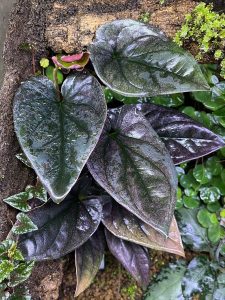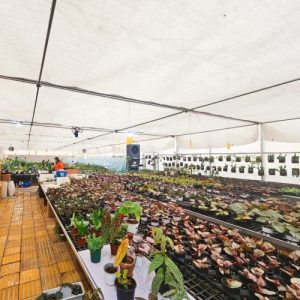- English
- Chinese
- French
- German
- Portuguese
- Spanish
- Russian
- Japanese
- Korean
- Arabic
- Irish
- Greek
- Turkish
- Italian
- Danish
- Romanian
- Indonesian
- Czech
- Afrikaans
- Swedish
- Polish
- Basque
- Catalan
- Esperanto
- Hindi
- Lao
- Albanian
- Amharic
- Armenian
- Azerbaijani
- Belarusian
- Bengali
- Bosnian
- Bulgarian
- Cebuano
- Chichewa
- Corsican
- Croatian
- Dutch
- Estonian
- Filipino
- Finnish
- Frisian
- Galician
- Georgian
- Gujarati
- Haitian
- Hausa
- Hawaiian
- Hebrew
- Hmong
- Hungarian
- Icelandic
- Igbo
- Javanese
- Kannada
- Kazakh
- Khmer
- Kurdish
- Kyrgyz
- Latin
- Latvian
- Lithuanian
- Luxembou..
- Macedonian
- Malagasy
- Malay
- Malayalam
- Maltese
- Maori
- Marathi
- Mongolian
- Burmese
- Nepali
- Norwegian
- Pashto
- Persian
- Punjabi
- Serbian
- Sesotho
- Sinhala
- Slovak
- Slovenian
- Somali
- Samoan
- Scots Gaelic
- Shona
- Sindhi
- Sundanese
- Swahili
- Tajik
- Tamil
- Telugu
- Thai
- Ukrainian
- Urdu
- Uzbek
- Vietnamese
- Welsh
- Xhosa
- Yiddish
- Yoruba
- Zulu
- Kinyarwanda
- Tatar
- Oriya
- Turkmen
- Uyghur

Maranta is a stunning tropical plant known for its distinctive leaf movement and rich leaf patterns. Care for it here. Originally from tropical areas, like Brazil, Maranta not only draws attention with its vibrant foliage but also makes a fantastic option for many families because of its pet-friendly character. This post will examine closely how to maintain Maranta plants so they are strong and healthy in indoor surroundings.

Maranta Plant
Maranta Plant Features and Background
Named for their day and night leaf movement, maranta plants—also called “prayer plants”—have These plants’ leaves spread during the day then fold upward at night as if in prayer. The movement of the leaves results from the plant modifying the angle by varying the water pressure at the base of the petiole to optimize the sunlight absorption. This special physiological characteristic not only makes Maranta plants aesthetically pleasing but also increases the enjoyment of studying the plant dynamics.
In tropical areas, maranta plants are extensively utilized in food packing and handicrafts; its vivid leaves are often spun into baskets or wrappers. Handcrafts created from Maranta plants are not only useful but also attractive because of the varied forms of the leaves on these plants. Thus, among indoor plant enthusiasts, the arrowroot plant is growing in popularity even more.
Lighting needs for arrowroot plants
The light needs of the arrowroot plants are particular. They flourish in medium to strong indirect light. While too little light may cause delayed plant development or leaf discolouration, too much direct sunshine may cause leaf burns. The ideal light environment is therefore bright light filtered by curtains or shade netting.
Though their development rate would slow down, arrowroot plants can hardly live in a dim light environment. Try to keep the plant away from direct sunlight, particularly intense afternoon sunshine, therefore guaranteeing its health.
Watering needs for arrowroot plants
The intensity of ambient light determines the frequency of watering arrowroot plants need. Generally speaking, one should water once every one to two weeks. Check that the top layer of the soil has dried 50% before watering. In a bright light environment the water of the plant evaporates quicker; in a weak light environment the water evaporates slowly and the watering frequency may be lowered.
Note that overwatering might lead to root rot; hence, ensure the potting soil has excellent drainage. The optimal moment to water the plant will be found by observing its leaves and soil.
An arrowroot plant’s humidity needs
Arrowroot plants originally come from humid tropical environments, so they have great humidity needs. Often low in humidity, indoor settings may cause the leaves of a plant to curl or dry up at their margins. Especially in air-conditioned settings or during dry winters, think about utilizing a humidifier or fine mist sprayer to raise humidity.
For arrowroot plants, maintaining indoor humidity above 50% is best, if at all feasible. Frequent spraying of the surroundings for the plant will aid to raise humidity and improve its general condition.
Archerroot plant temperature needs
With an ideal range of development temperature between 65°F and 85°F (18°C and 30°C), the arrowroot plant likes a warm surroundings. This range of temperature replics the circumstances of its native tropical home. Keep your arrowroot away from below 60°F (15°C) since too low temperatures might cause chilling damage to the plant.
Keep your home temperature constant throughout the winter and steer clear of positioning the plant in direct drafts or next to frigid windows.
Kind of soil Arrowroot needs?
Arthropoda like well-drained soil. Rich in organic content and with appropriate aeration, the finest potting soil is Suggested is a soil mix of coir, vermicompost, perlite, coop, and compost, pine bark. These components not only provide required nutrients but also assist to preserve appropriate moisture and air circulation.
Steer clear of utilizing impermeable or heavy soils as they may cause water to build up and raise root rot risk.
Typical Arrowroot Plant Problems and Their Remedies
While tending to arrowroot plants, some typical issues you might run across:
Usually lacking water or low humidity causes wilting and curling leaves. Watering more often and raising the environmental humidity will help to solve this.
Usually indicating overwatering, yellowing leaves and black bottoms point to Water less often, then ensure the ground drains properly.
Levers on leaves: A fungus infestation or mineral accumulation from tap water might be the causes here. Water with distilled water; routinely clean the plant leaves to aid to minimize mineral accumulation.
Indoor arrow roots might run across mealybugs, fungus gnats, and spider mites among other pests. Check the plants often, and treat with a natural pesticide like neem oil.
Pet safety with arrowroots
Pet-safe are arrowroots. They are safe to cohabit with animals like dogs and cats as they do not have harmful elements. To stop dogs from inadvertently eating or injuring the plants, it is advisable to arrange them where they cannot readily reach them for safety concerns.
Because of their exquisite leaves and unusual physiological traits, arrowroots plants have drawn many enthusiasts for plants overall. Proper light, water, moisture, and soil management along with careful attention to the treatment of typical issues will help you to guarantee that arrowroots in your house are healthy and strong. With these advice on care, maybe you will be able to appreciate the natural beauty these arrowroot plants provide and better tend them.

Maranta Plant
Perfect houseplant candidates are arrowroot plants, which are renowned for their unusual leaf movement and vivid hues. They need low humidity, medium to strong indirect light, and moderate water levels. Maintaining plant health requires keeping the soil well-drained and avoiding low temperatures. Although they are not dangerous for animals, arrowroot plants should nonetheless be kept out of reach of them. These lovely plants will appeal naturally if you take good care and control the surroundings.



